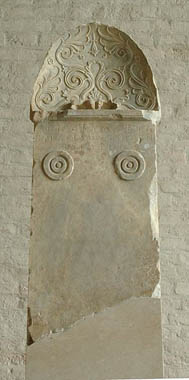Chapter 4 |
Reading |
Boundary Stones and Grave Markers
Just as the English language from the 16th-18th centuries exhibited peculiar ways of spelling, so too did Greek until the alphabet and spelling became more or less standardized in the 4th century BCE. Two of the most important spaces in Athens are the Agora (market) and the Kerameikos (cemetery, named after the potters' quarters located nearby).
Here are two boundary stones that mark off these public areas from encroachment by houses and private establishments. As you read each one, write out the full text of each inscription, then rewrite it in lower case letters, and finally translate each one.
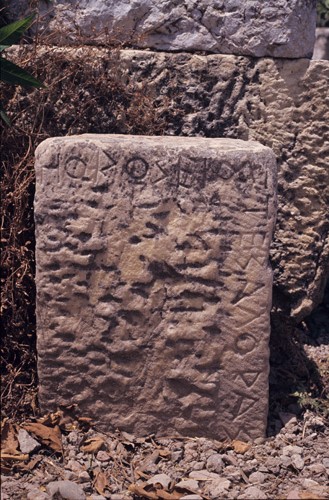
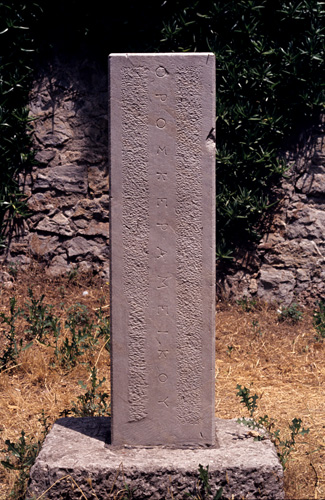
The next two are associated with the Shrine of the Tritopatres. No one knows for sure who the Tritopatres were, perhaps the souls of dead ancestors.
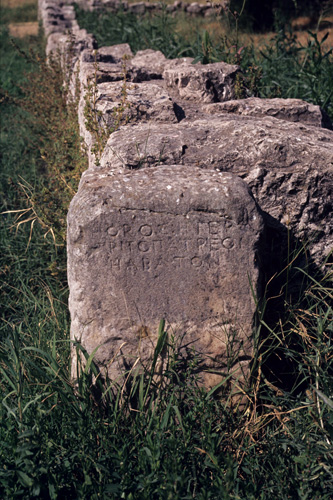
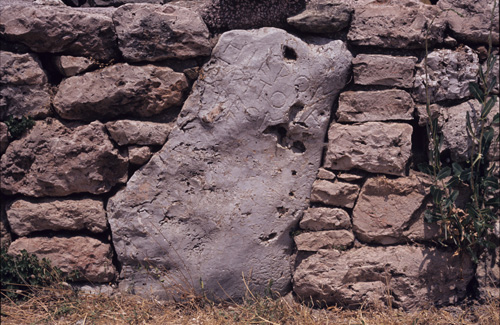
The last four inscriptions are gravestones. Click on the image and then choose the largest image available and zoom in to read the inscription.
What behaviors, expectations, and values about women and men do these gravestones reveal? Pay attention to clothing, posture, props, and the inscription in each gravestone.
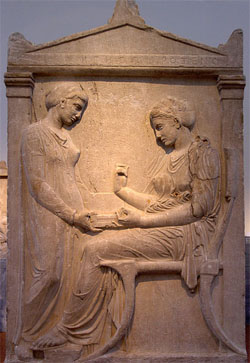 |
|
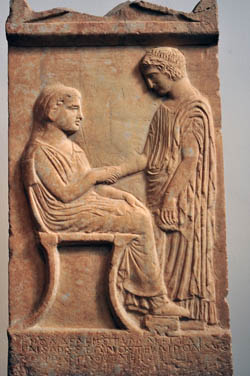 |
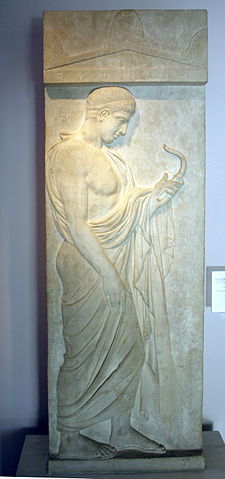 |
After you have attempted to transcribe the inscriptions, you may check your work here.
For more images of gravestones, see the Classical Art Research Centre.
Photo credits 1-4: John Gruber-Miller © 2013
Funerary Stele of Hegeso. Pentelic marble. 410-400 BCE. National Archaeological Museum, Athens.
Funerary stele of Xenokrateia, 350 BCE. Glyptothek, Munich. Photograph by Bibi Sant-Pol.
Funerary stele of Aristylla, 430-25 BCE. National Archaeological Museum, Athens. Photograph by D. S. Lewis.
Funerary Stele of Eupheros. Pentelic marble. ca. 420 BC. Kerameikos Museum, Athens. Photograph by Giovanni Dall’ Orto.
